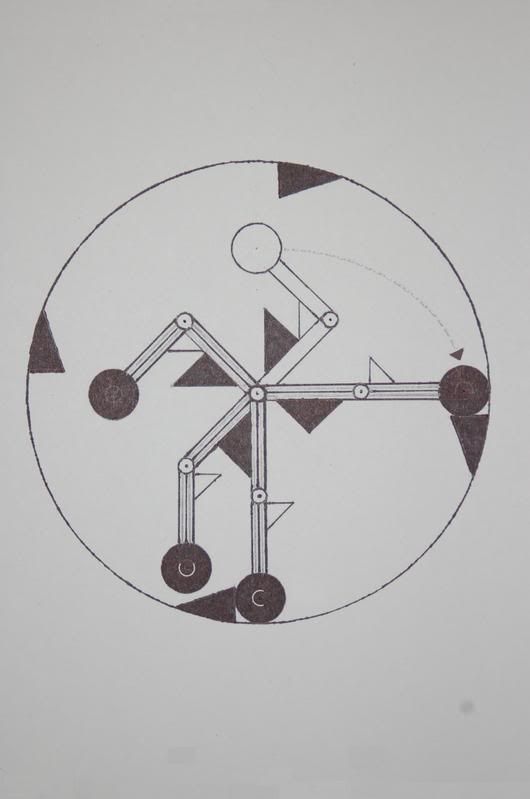something tells me bessler's wheel was not complex.
this model fits the description of many clues.

at first glance this wheel may not appear to be out of balance.
look closely at the movement...... use discernment.
.........................................................................................................
key points:
things to notice:
1) weight C hangs freely from the axle when it reaches 6:00.
for the next 1/8 turn (45 degrees) this weight has no influence on rotation.
2) weight U hangs freely from it's 'elbow' (pivot).
weight U applies it's weight to this location --> 'elbow' (pivot).
....................... U C ?
3) arms are independently connected to the axle.
('shoulder' pivots move independantly)
NOT DRAWN:
4) arms are spring-assisted at each joint / pivot.
both the 'shoulder & elbow' are spring-loaded in favor of 'opening' to the position of the 3:00 arm.
5) the finished model is two (above pictured) 4-weight wheels put together.
--> two wheels combined into one 8-weight wheel.
each (4-weight) wheel is offset 1/8 turn (45 degrees) from the other.
wheels are attached (side by side) using the same axle. 8 weights fall during one full rotation.
.................................................................................................
..........................................................................................................................
................
I have not built this model yet.



